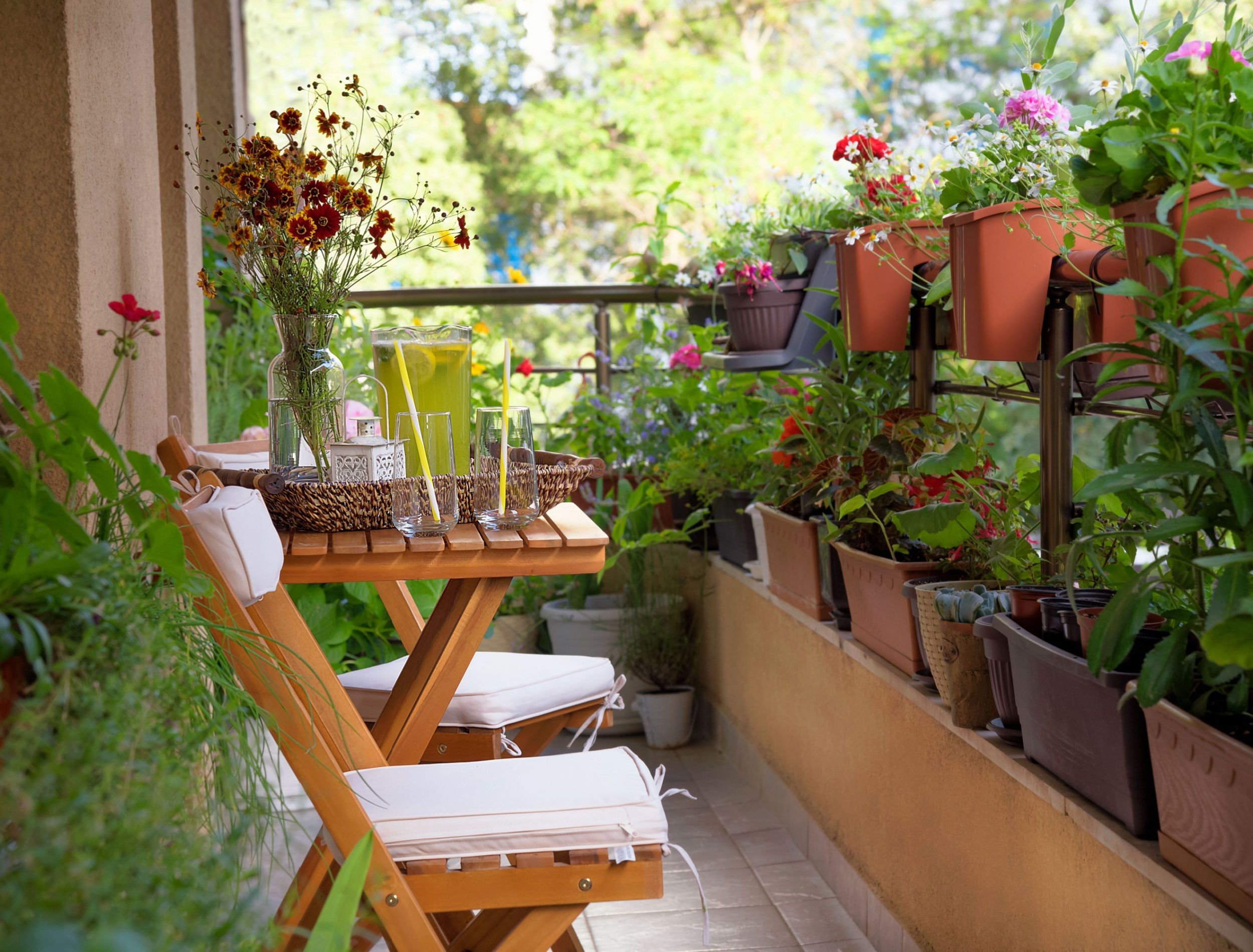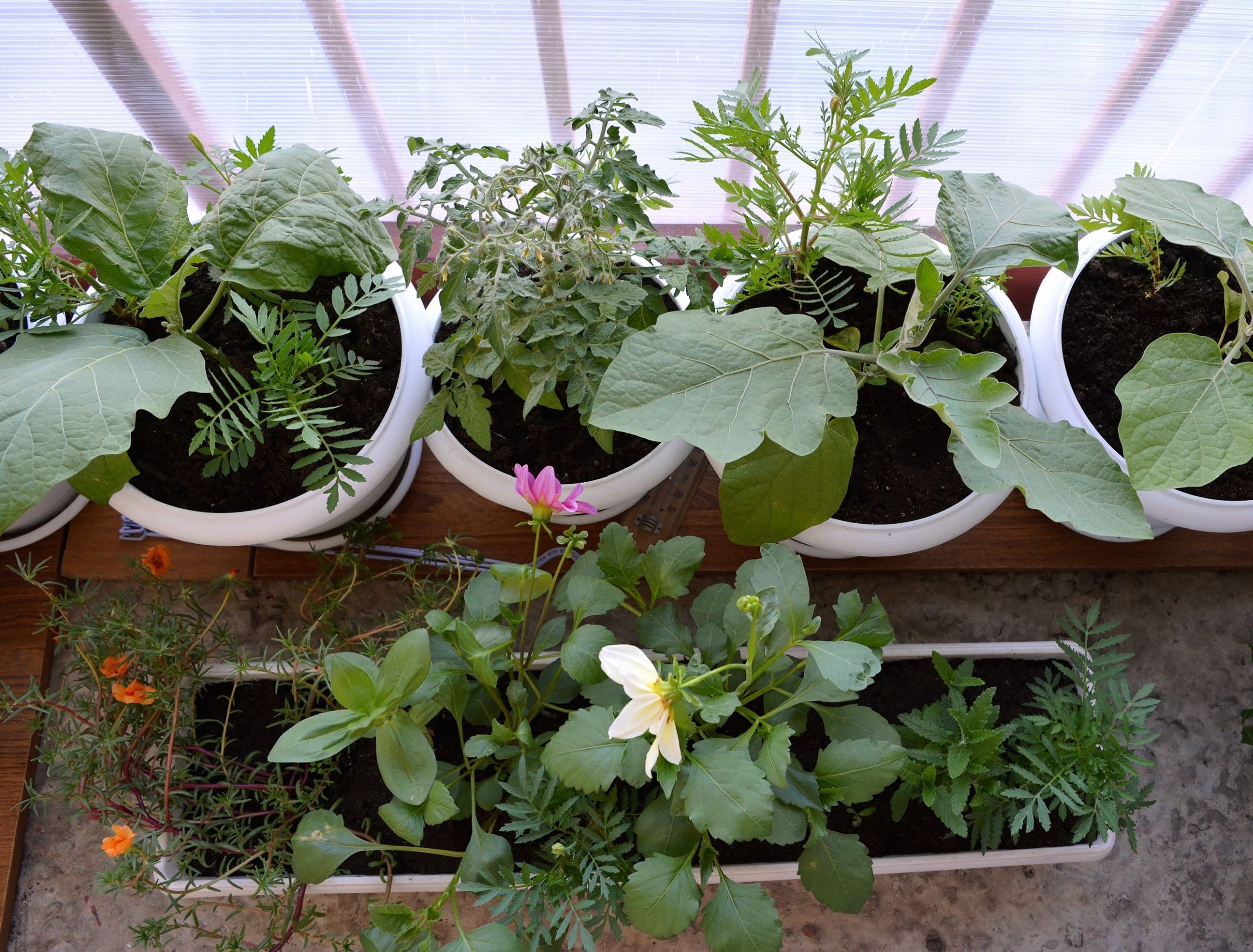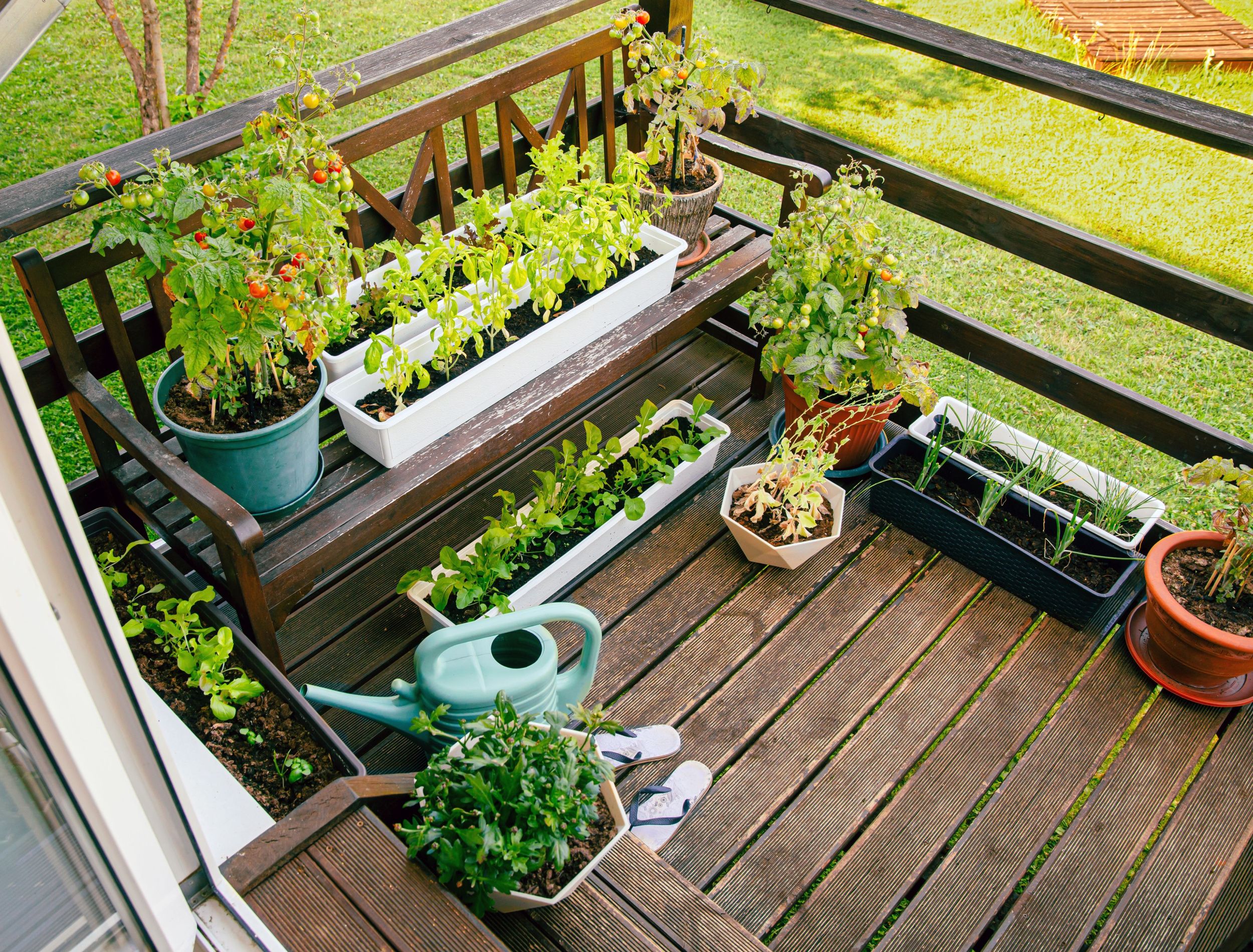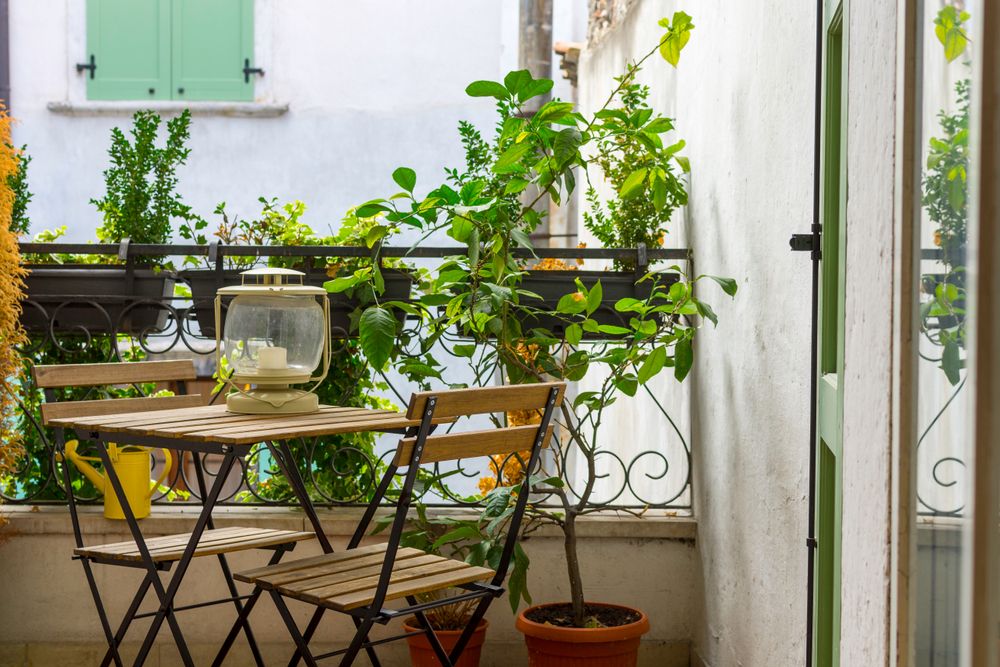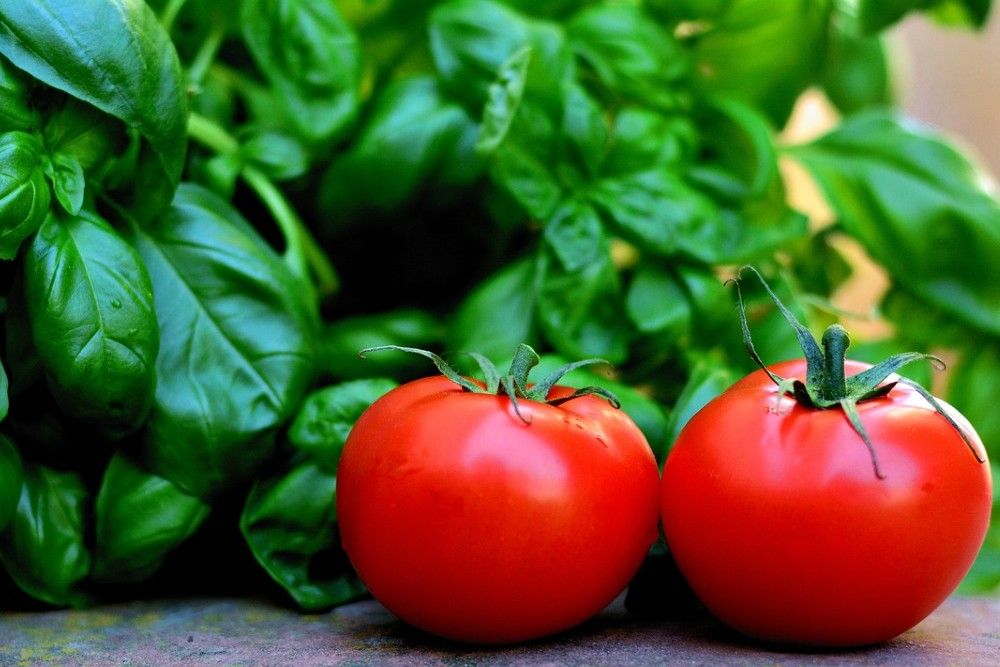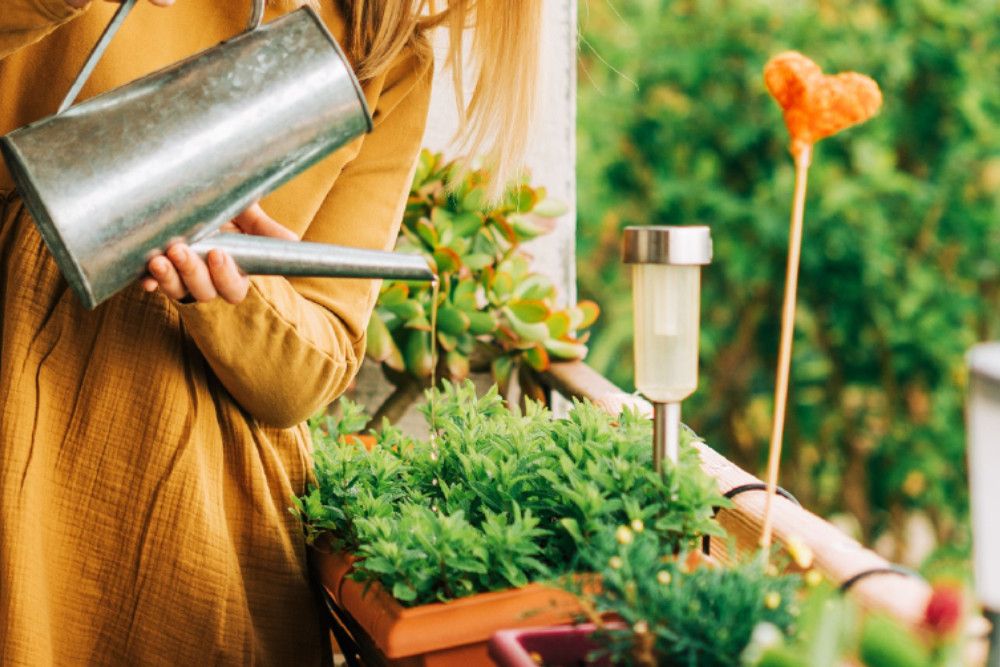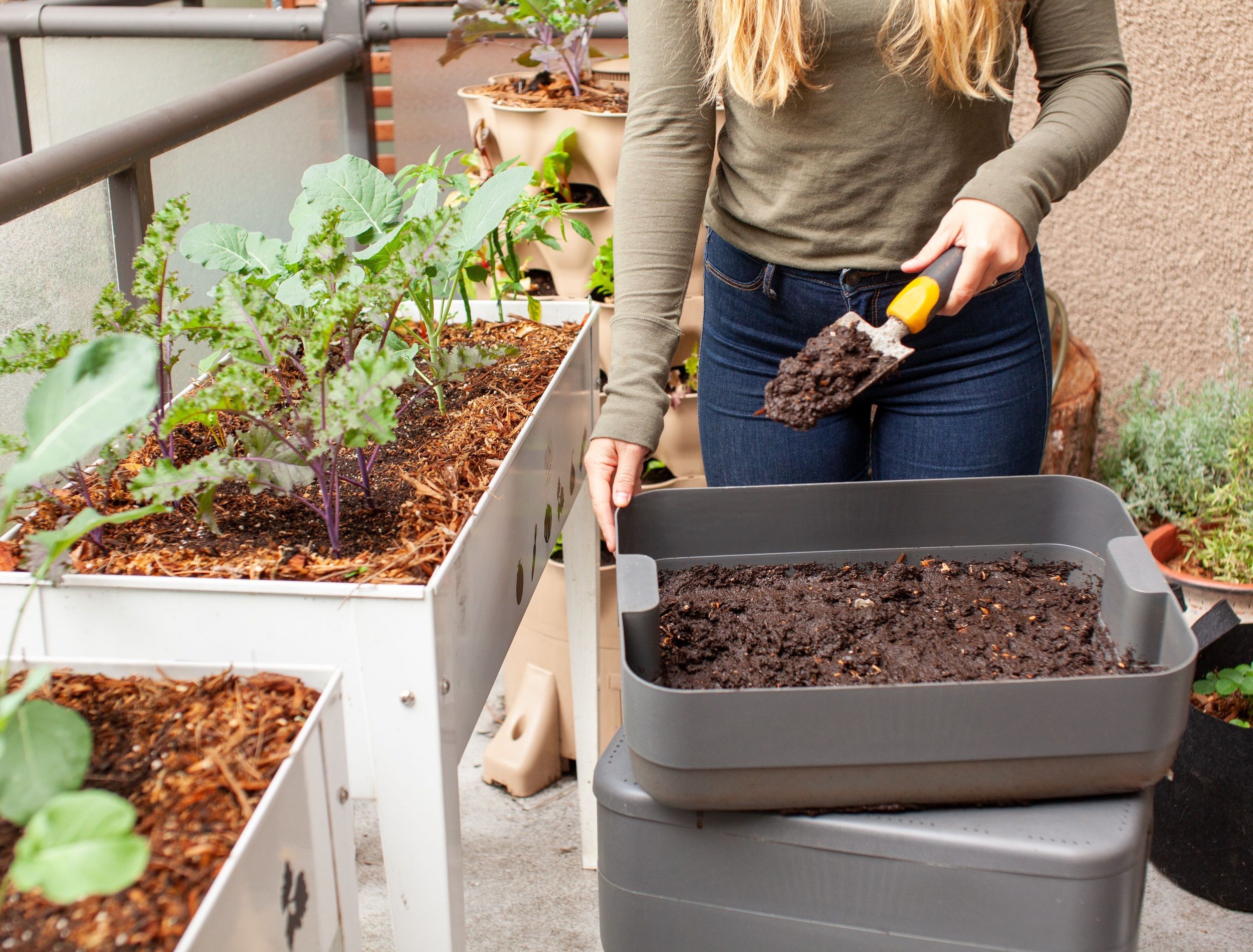Get ready to start growing on your balcony this spring! Regardless of your outdoor space, starting a garden on a patio or balcony is a fun challenge that any gardener, beginner, or expert can attempt. Whether you live in a condo or an apartment with limited space, growing plants in containers and pots can elevate your gardening game.
Although, container gardening requires a little more work than plants growing in the ground. Containers dry out more quickly, require more frequent care, and regular fertilizing. But, not to worry, with these tips and advice, you'll be growing on your balcony in no time at all!
Read on and discover six tips for a successful balcony garden -- from which plants to grow to what size container to use and more.
1. Select Container-Friendly Plants
Image credits: Happy Dragon via Shutterstock
Before you start growing on a balcony, it's important to figure out what type of plants you want to grow. Quite a few different flowers, vegetables, and herbs grow well in containers. When deciding, look for container-friendly varieties that are labeled as patio, dwarf, or bush. These plants will be more compact than other varieties and are specifically designed to grow in containers.
If you are growing from seed, read the back of the seed packet to determine how big the plant will get, along with when to sow your seeds. For transplants, check the plant tag to determine the variety. Research the type of plant first and choose compact varieties whenever possible.
The most popular edible plants to grow in containers include tomatoes, peppers, eggplants, beans, and cucumbers. Greens like lettuce, spinach, arugula, and swiss chard also do particularly well in pots thriving on your balcony.
If you enjoy growing flowers, some container varieties include marigolds, dahlias, zinnias, and geraniums. When it comes to herbs, almost all will thrive in containers -- from basil to parsley to oregano and more. The options are endless, so choose vegetables and herbs that you and your family will enjoy cooking with!
2. Choose the Right Container Size
Image credits: FotoHelin via Shutterstock
After you have chosen what types of plants to grow on your balcony, it's time to choose your containers. You'll want to have a wide variety of container sizes as different plants will require different sizes. The most common types of containers are terra cotta, clay, ceramic, plastic, and wood.
All containers should have proper drainage holes which allow water to drain out of the bottom. This prevents water from building up in the base of the container, leading to issues like root rot, fungal disease, and even plant death.
Plants that grow best in a large container that is 18 to 24 inches deep include tomatoes, potatoes, beans, zucchini, squash, and cucumber. Eggplant, peppers, beets, peas, kale, and celery grow in a more medium sized container (12 to 18 inches deep). Shallow root vegetables like lettuce, spinach, arugula, green onions, and chives do well in a smaller container that is 6 to 9 inches deep.
3. Place Plants Based on Sunlight
Image credits: Almaran via Shutterstock
Create a plan for your container garden by figuring out how many hours of sunlight each area of your balcony receives. You'll want to place your plants around the balcony based on light exposure and temperature. Certain areas may be blasted with all-day sun and intense heat, whereas other spots may be shadier and only receive a few hours of sunlight. Pay attention to these details and place your plants accordingly.
Plants that thrive in full sun, which is anywhere from six to eight hours per day, are tomatoes, peppers, eggplant, squash, and beans. Plants that will tolerate some shade are lettuces, arugula, spinach, swiss chard, broccoli, and turnip.
4. Companion Planting
Image credits: congerdesign via Pixabay
Typically if you are growing on a balcony, you're probably dealing with limited space. If you want to grow even more plants in your small space, consider taking advantage of companion planting. Companion planting is a great way to grow multiple plants together in the same container. This allows you to utilize the space on your balcony and grow more in less square footage. On top of this, companion planting also deters pests, promotes plant growth, and attracts pollinators.
Choose plants that have similar growing conditions and plant them together in the same pot. Leave adequate space in between the plants so they can continue to grow to their full size. Do your research beforehand to ensure that whatever plants you have chosen will grow well together.
One example is planting basil or marigolds at the base of your tomato plants. Basil improves the flavor of your tomatoes, and marigolds help with pollination and keep away unwanted insects. Another option is planting nasturtiums with kale, cabbage, or broccoli plants. Nasturtiums repel caterpillars that love to munch on the leaves of these cruciferous vegetables.
5. Mulch Plants and Water Regularly
Image credits: Anna Nahabed via Shutterstock
Watering your container garden properly is so important to keep your plants growing healthy and strong. Container plants dry out much faster than plants growing in the earth, so having a regular watering schedule is a must.
Containers plants need water more often so check on your plants each day to make sure that the soil remains moist. Test the soil by inserting your finger into the container. Water when the first few inches of soil feel dry to the touch. If you are unsure, you can measure the soil moisture by using a moisture meter.
Mulching around your plants is another way to help retain moisture in your containers and keep the soil cool. Apply a layer of mulch to all your containers, about 3 inches thick. Bark, wood chips, fallen leaves, and straw are a few natural mulch choices.
Pro Tip: Water your plants in the early morning, if possible, before the sun rises. This allows your container plants to better endure the heat and sun throughout the day.
6. Fertilize Your Balcony Garden
Image credits: Ashley-Belle Burns via Shutterstock
Container plants need to be fertilized regularly to encourage new growth and replenish essential nutrients in the soil. Over time, plants will lose nutrients in their soil from wind and rain. Fertilize your balcony garden every few weeks to keep your plants happy.
It's best to use an organic fertilizer for edible plants. Follow package directions for how much fertilizer to use and how often to apply. Popular choices include compost, fish emulsion, seaweed, alfalfa meal, and bonemeal.
Transform Your Balcony Space
Container gardening is a fun and creative way to get growing on your balcony! Whether you want to grow flowers, fruits, vegetables, or kitchen herbs -- don't let the size of your outdoor space stop you. Just remember, proper watering and fertilizing is crucial to keep your plants flourishing in your urban garden.
Are you growing on a balcony this spring or summer? Leave a comment down below.

